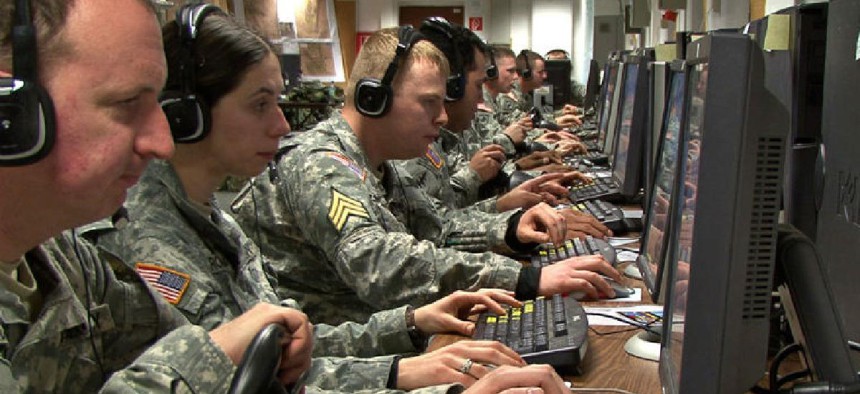Army eyes enterprise-as-a-service model

The Army is expected to announce its implementation plans for moving to enterprise-as-a-service model in March.

The Army is making serious plans to revamp its network, starting with the implementation of enterprise-as-a-service.
"Currently how we operate is government-owned, government-operated equipment. We're exploring the possibility of contractor-owned, contractor-operated, [on a] government-owned site," Col. Jeth Rey, Army Cyber Command's director of operations (G3), said at a Feb. 22 Armed Forces Communications and Electronics Association D.C. chapter event.
Rey hinted the plan would involve multi-service collaboration with the Air Force and Navy on their pilot programs but stressed that the development was "very new."
The service will announce its plans to roll out enterprise-as-a-service model in March at the AFCEA Army Signal Conference, he said.
Additionally, the Army has resumed deployment of embattled Joint Regional Security Stacks program, Rey said. The service previously paused its efforts due to latency issues.
Meanwhile, the Army's network cross functional team has been busy. Col. Nora Marcos, the Army team's chief of staff, told reporters following the event that the team has done six experimentation and demonstrations for capability sets in the past year at the Network Integration Evaluation Army Capabilities Center, the Fort A.P. Hill training center, the U.S. Army Central Command Readiness Training Center and Camp Atterbury.
The goal is deliver new technology as an integrated package in two-year capability set phases.
Marcos said the six-demonstrations-per-year pace will likely slow as IT capabilities are fielded and integrated into existing programs of record.
"Once we give it to a soldier and we field it, there's more that we have to do," Marcos said. "Is it going to change our doctrine? Is it going to adjust how we do our organizations?" She added that tough decisions are ahead regarding which technology to field immediately versus letting a prototype mature first.
"If it's a game changer," she said, leaders will have to decide whether "to rush to get it out or do we wait and let it develop so that we're not handing it over to soldiers and saying figure out how to command with this tool."
NEXT STORY: FCC wants to open up high bandwidth spectrum






